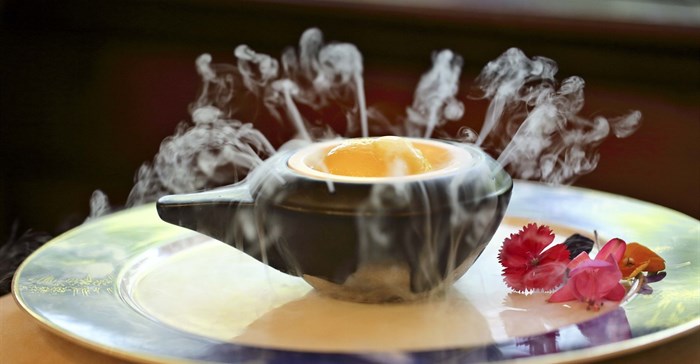Indian gastronomy trends spice up Taj Cape Town's Bombay Brasserie offering

French chef David Tilly – new executive chef at Taj Cape Town – has used his passion and talent for food to travel the world and oversee many of its finest restaurants, placing him in a unique position to understand what makes dining experiences ‘sing’, especially in today’s competitive space where foodie-oriented experiences abound.
Tilly has worked at Taj hotels in London, India and Morocco and took up his current job in July. Now, he oversees Taj Cape Town’s fine dining Indian restaurant, Bombay Brasserie, which is famed for its symphony of subtle flavours, matched with opulent décor. Additionally, Tilly is hoping to ‘spice up’ Mint – Taj’s relaxed dining alternative, with a Mediterranean spin.
Here, Tilly delves into the trends he’s seeing in the Indian gastronomic space:
Health is wealth. Millennials’ preoccupation with health has given rise to a focus on ethically-sourced, seasonal ingredients that are appropriate for a plant-based or low-carb diet. South Indian cuisine lends itself to this style of eating, with subtle, flavours including fresh coconut and seafood. London’s Quilon (run by friend Chef Sriram Aylur) put South West Indian cuisine on the map in the UK, winning its first Michelin star in 2008 and retaining it ever since. For me, this is the best Indian restaurant in London. The lobster broth with coriander and coconut cream is a personal favourite, along with the pink peppercorn chilli prawns. In terms of trends, I think we’ll see more South Indian restaurants worldwide, especially with the global movement towards a more health conscious way of life.
The whole experience matters. People expect top restaurants to entertain and take them on a journey. Every detail needs to be carefully thought out – from the waitrons and the stories they tell guests, to the crockery, plating and lighting. Eating out is increasingly becoming synonymous with theatrical immersion. Diners expect to be delighted, surprised and ‘tricked’ – in a way that immerses all the senses.



Fusing local ingredients with authentic spices. Another of my favourite UK restaurants is Chutney Mary, where presentation is a passion and fresh ingredients are selected on a daily basis. I love the fact that the chefs take seasonal produce like Dover sole and dress it with authentic spices to retain the integrity of Indian flavours. The foie gras tandoor also blew me away.
Degustation is a new elation. Many Michelin restaurants are doubling down on degustation, serving a tasting menu to give guests a sample of everything on offer. Although traditional Indian food is usually served in hearty portions suited for sharing, it’s also a treat to try everything on a menu to get a real feel for the best of Indian gastronomy.
Street food gets street cred. When I lived in India, I’d often pop down to the markets to grab a steaming paratha bread stuffed with spiced potatoes and dal. New Delhi has one of the world’s best street food scenes and I’ve started seeing lots of this kind of food on the menus of five-star Indian restaurants around the world. At Taj, we serve apricot and potato tikki cakes – a variation of the popular North Indian street snack. It’s not just Indian street food that’s proving popular – think of Spanish tapas and Hawaiian poke.
Integrity is everything. Food made with heart tastes different – it has a special quality and is impossible to emulate. Trends will come and go but authenticity will always be prized. I think this is what sets Bombay Brasserie apart – it’s home to five Indian chefs who speak the language of spice.









